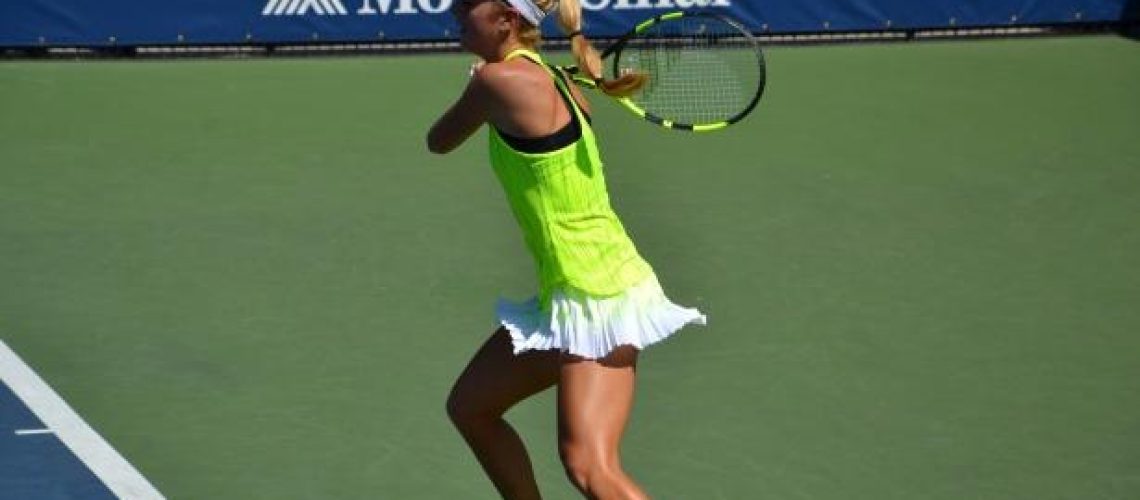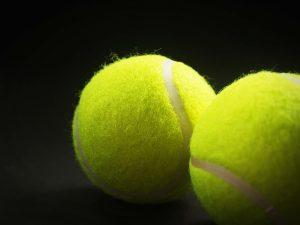We may earn money or products from the companies mentioned in this post.
Introduction

Tennis, a sport loved by millions around the world, has a rich history and a unique set of terms and rules that make it both intriguing and challenging Whether you’re a player looking to improve your game or a fan wanting to fully appreciate the action on the court, understanding the language of tennis is essential In this article, we’ll delve into the origins of tennis and explore why comprehending its terms and rules is important for players and fans alike
A Brief History of Tennis
The origins of tennis can be traced back to ancient civilizations such as Egypt, Greece, and Rome However, it was during the medieval period in Europe that a precursor to modern tennis began to take shape Initially played indoors in monastic cloisters, this early version involved hitting a ball against walls using bare hands or gloves
As time went on, rackets were introduced, leading to the development of real tennis or royal tennis This sophisticated form of the game gained popularity among European nobility during the 16th century It featured elaborate courts with sloping roofs, intricate rulesets, and specialized equipment
In the late 19th century, lawn tennis emerged as a more accessible variant The invention of lawn mowers allowed for grass courts to be created outside homes and clubs This democratized the sport and made it more appealing to players from all walks of life
The Importance of Understanding Tennis Terms and Rules
Tennis is not just about hitting balls back and forth across a net; it’s an intricate dance between strategy, skill, athleticism, and mental fortitude To fully appreciate this dynamic sport as either a player or spectator, understanding its terminology and rules is crucial
For players who aspire to improve their game, knowing the technical jargon and rules enables better communication with coaches, trainers, and fellow players It allows for effective strategy discussions, precise instructions during training sessions, and clear analysis of matches Additionally, understanding the rules ensures fair play and helps prevent disputes or confusion on the court
As a fan, comprehending tennis terms and rules heightens your enjoyment of the sport By knowing what a backhand slice is or how an advantage point works, you can follow the action more closely and appreciate the nuances of each shot Understanding the scoring system, such as love (zero), deuce (40-all), and tiebreakers adds to the excitement of watching a match unfold
Moreover, being familiar with tennis terminology enhances your ability to engage in conversations about the sport Whether it’s discussing players’ strategies or analyzing their performance, having a solid grasp of tennis language allows you to participate actively in discussions both online and offline
In conclusion,
– Tennis has a fascinating history that spans centuries
– Understanding tennis terms and rules is essential for both players looking to improve their game and fans wanting to fully appreciate the sport
– The knowledge of tennis terminology enhances communication among players, promotes fair play on the court, and enriches fans’ experience by allowing them to follow matches more closely
The Concept of Advantage in Tennis

Definition and Significance
In the thrilling world of tennis, the concept of advantage holds immense significance But what exactly does it mean? Well, put simply, advantage refers to a player’s opportunity to win the next point after a deuce has been reached It’s like a little glimmer of hope that can tilt the scales in favor of one player
Within the scoring system, advantage is denoted by “AD” on the scoreboard So when you see those two letters displayed beside a player’s name, you know they have an edge over their opponent
The Role of Advantage in a Tennis Match
Advantage plays a crucial role in determining game strategy for both players It adds an additional layer of complexity to their decision-making process Should they play it safe and maintain their advantage or take risks to secure victory? This tactical dilemma keeps players on their toes throughout the match
Furthermore, advantage has a significant impact on player psychology during crucial moments When battling for that elusive game-winning point, emotions run high The player with advantage might feel confident and motivated, while their opponent might experience frustration or desperation These psychological factors can either fuel determination or hinder performance
Scenarios where advantage comes into play

In the game of tennis, there are certain situations that can completely change the momentum and outcome of a match One such scenario is the deuce situation, which occurs when both players are tied at 40-40 or beyond in a game This pivotal moment often sets the stage for intense competition and strategic moves
1 How to reach deuce and its importance as a turning point in a game
Reaching deuce requires both players to win three points each in a game, resulting in a tie at 40-40 This equal score not only signifies the competitiveness between the two competitors but also serves as a turning point in the game It’s at this moment that both players must bring their A-game and showcase their skills to gain an advantage
2 What happens when one player scores following a deuce situation?
a)
Advantage Player:
When one player manages to score after deuce, they gain what is called “advantage” This means that they have an opportunity to win the game by securing the next point The advantage player now holds an upper hand over their opponent, putting pressure on them to make strategic moves and regain control
b)
Possible outcomes after gaining the advantage:
-
Winning the game:
If the advantage player manages to secure the next point, they win the game outright This achievement gives them not only a sense of accomplishment but also boosts their confidence for future matches -
Returning to deuce:
On the other hand, if the opposing player scores following an advantage situation, it brings back equality with another tie at 40-40 This means that both players have to once again battle it out to gain the upper hand -
Repeating this process:
The cycle of advantage and deuce can continue until one player secures two consecutive points This back-and-forth nature of the game keeps the spectators on edge and adds an element of unpredictability to the match
The scenarios involving advantage in tennis not only test a player’s skills but also their mental fortitude It’s a delicate balance between staying composed under pressure and seizing every opportunity to gain an advantage over their opponent These moments of tension and excitement are what make tennis such a captivating sport
Advantage-related strategies and their impact on professional matches

In the world of professional tennis, advantage can make all the difference between victory and defeat Top players have mastered various tactics to maximize their advantage in crucial moments These strategies not only help them capitalize on advantageous situations but also neutralize their opponents’ advantages Let’s explore some common tactics employed by elite players when faced with an advantage situation
Serving techniques: how to capitalize on an advantageous serve
Serving is a critical aspect of tennis, and top players understand how to use it to their advantage When they find themselves in a favorable serving position, they employ specific techniques to gain an upper hand Whether it’s hitting powerful serves with pinpoint accuracy or utilizing deceptive spins and placements, these players know how to maximize the impact of their serves and put pressure on their opponents
Returning serves effectively: neutralizing opponent’s advantage through skilled returns
Returning serves effectively is another key strategy employed by top players when faced with an opponent’s advantage They possess exceptional anticipation skills that allow them to read their opponent’s serve and react quickly By returning serves accurately and aggressively, they can level the playing field and nullify any advantage gained by their opponents through powerful or well-placed serves
Mental preparedness: maintaining focus during high-pressure scenarios
In high-stakes professional matches, mental fortitude plays a crucial role in capitalizing on advantages Top players understand the importance of staying mentally strong throughout the match, especially during critical moments where advantages are at stake They employ various techniques such as visualization, positive self-talk, and deep breathing exercises to maintain focus and composure, ensuring they make the most out of advantageous situations
Case studies from notable professional matches

Examining case studies from notable professional matches can provide valuable insights into the impact of advantage-related strategies These examples highlight the importance of understanding, achieving, or overcoming advantages in competitive tennis
The role of coaching and training

Mastery of advantage-related situations requires continuous coaching and training Coaches play a vital role in helping players identify their strengths and weaknesses and develop personalized strategies to maximize their advantages Rigorous training sessions that focus on specific scenarios further enhance a player’s ability to excel when faced with advantageous situations Through effective coaching and training, players can elevate their game and consistently leverage advantages to achieve success at the professional level
Useful Links

What Does Ad Mean In Tennis?
What Does Ad Mean in Tennis?
Tennis scoring system
Tennis scoring, explained: A guide to understanding the …
Tennis Terms and Definitions | USTA
What does AD mean in tennis?
Advantage Set | A Tennis Term at Sports Pundit
The Tennis Scoring System
Tennis: Glossary of terms and definitions
Learn What The Term Love Means In Tennis
Collegiate Tennis No-Advantage Scoring Rules
Does Love Conquer All In Tennis?
BBC Sport Academy | Tennis | Rules | Scoring
How to keep score in tennis
Tennis Scoring 101
What Does “Ad” Mean in Tennis? The Terminology Explained
Tennis Terms Meanings: The Ultimate List (A to Z)
Tennis Glossary






